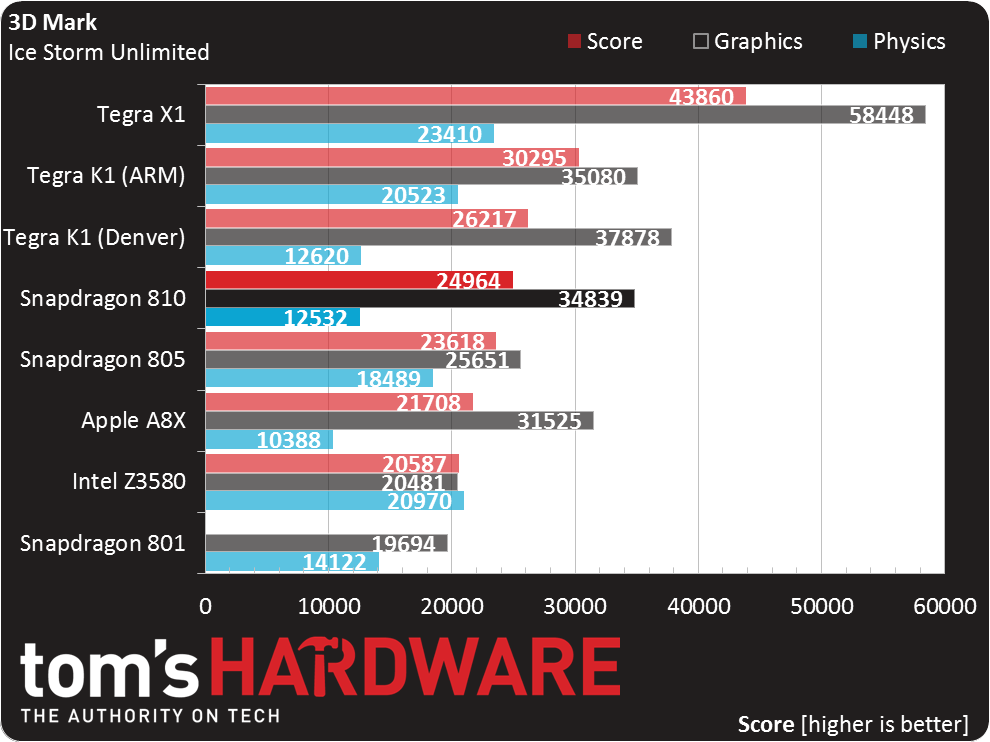Snapdragon 810 Performance Preview
Qualcomm’s first 64-bit SoC is finally here, but swirling rumors about overheating and poor memory performance continue to smolder. Will the Snapdragon 810 burn up our benchmark charts or just go up in smoke?
Results: GPU
3DMark (Anti-Detection)
Futuremark has become a name synonymous with benchmarking, and the company's latest iteration of 3DMark offers three main graphical benchmarks: Ice Storm, Cloud Gate and Fire Strike. Currently, the DirectX 9-level Ice Storm tests are cross-platform for Windows, Windows RT, Android and iOS.
Ice Storm simulates the demands of OpenGL ES 2.0 games using shaders, particles and physics via the company's in-house engine. Although it was just released in May of 2013, the on-screen portions of Ice Storm have already been outpaced by modern mobile chipsets, with Nvidia's Tegra 4 and Qualcomm's Snapdragon 800 both easily maxing-out the Extreme version (1080p with high-quality textures). However, Ice Storm Unlimited, which renders the scene off-screen at 720p, is still a good gauge of GPU-to-GPU performance.
The Adreno 430 in the 810 posts a 36% higher graphics score than the 805, in line with Qualcomm's 30% estimate. However, there's a significant regression in the Physics score. As we discussed in our iPhone 6 review, Futuremark's investigation of Cyclone's Physics performance revealed that it has issues "dealing with non-sequential data structures with memory dependencies." Or in other words, Apple's memory controller is optimized for sequential rather than random access requests. It's possible that Snapdragon 810's memory controller has a similar preference for sequential data. Qualcomm's push into 4K video playback and recording as well as high resolution image processing would certainly benefit from a memory controller tuned for sequential access.
The Physics score may also be impacted by higher memory latency when dealing with random accesses with dependencies. Even if this were true however, it would not explain a 48% drop in performance on its own. More than likely, it's a combination of things.
Basemark X 1.1
Based on the Unity 4.0 game engine, Rightware’s Basemark X is a cross-platform graphics benchmark for Android, iOS and Windows Phone 8. This test utilizes Unity’s modern features via the OpenGL ES 2.0 render path to simulate how a modern game might look and run. Basemark X is an aggressive metric that still hasn’t been maxed out by the latest mobile SoCs.
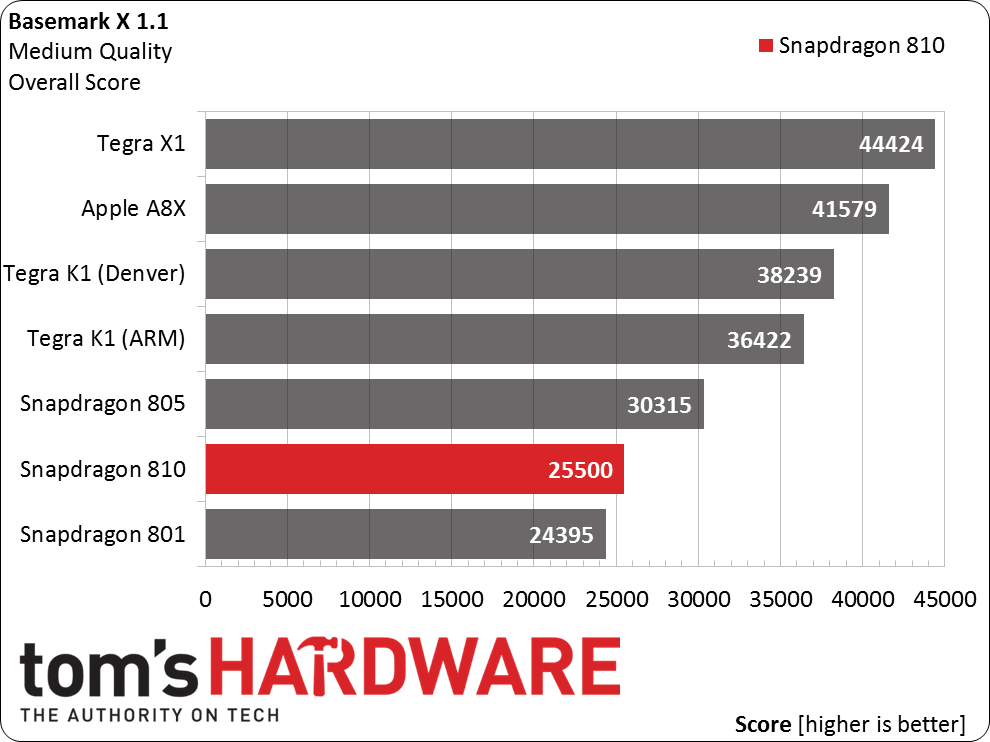
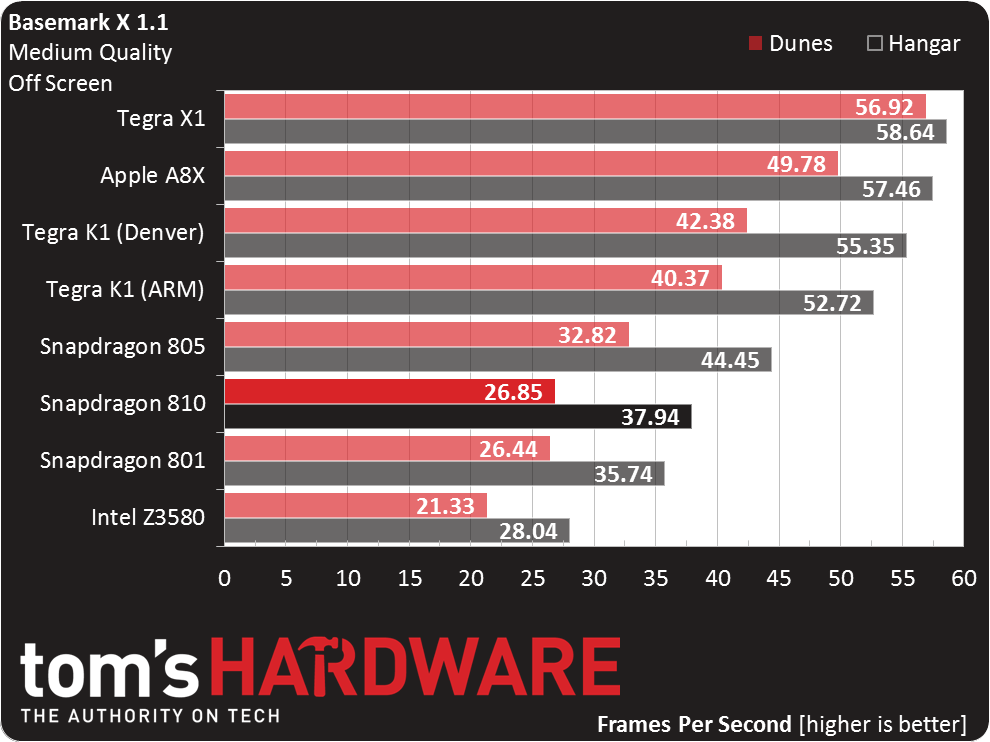
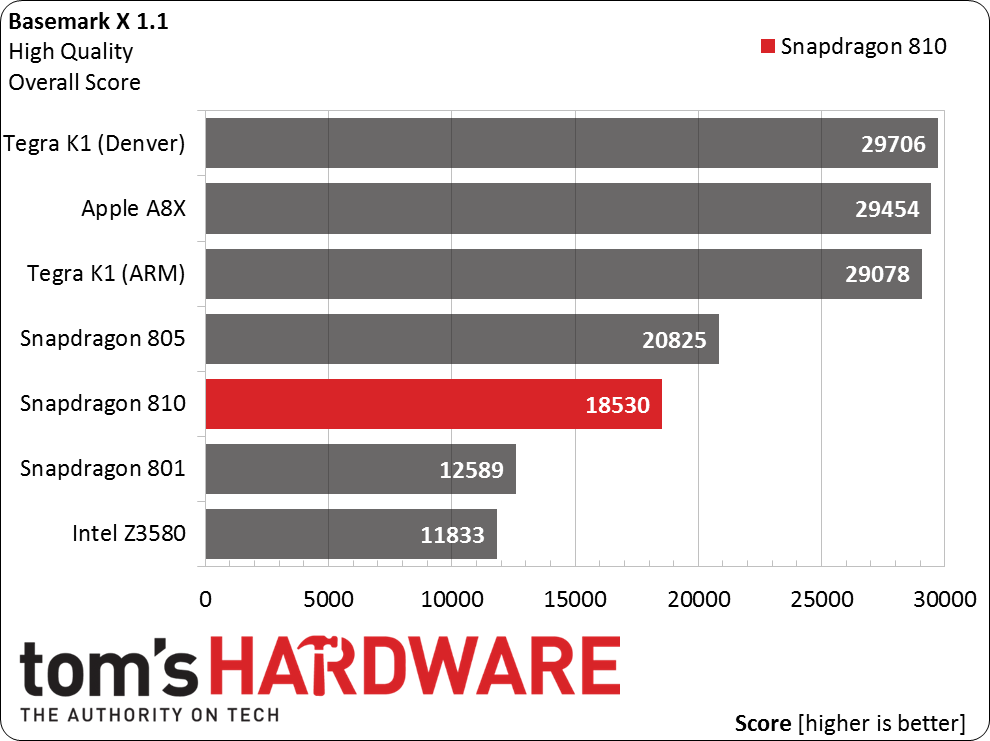
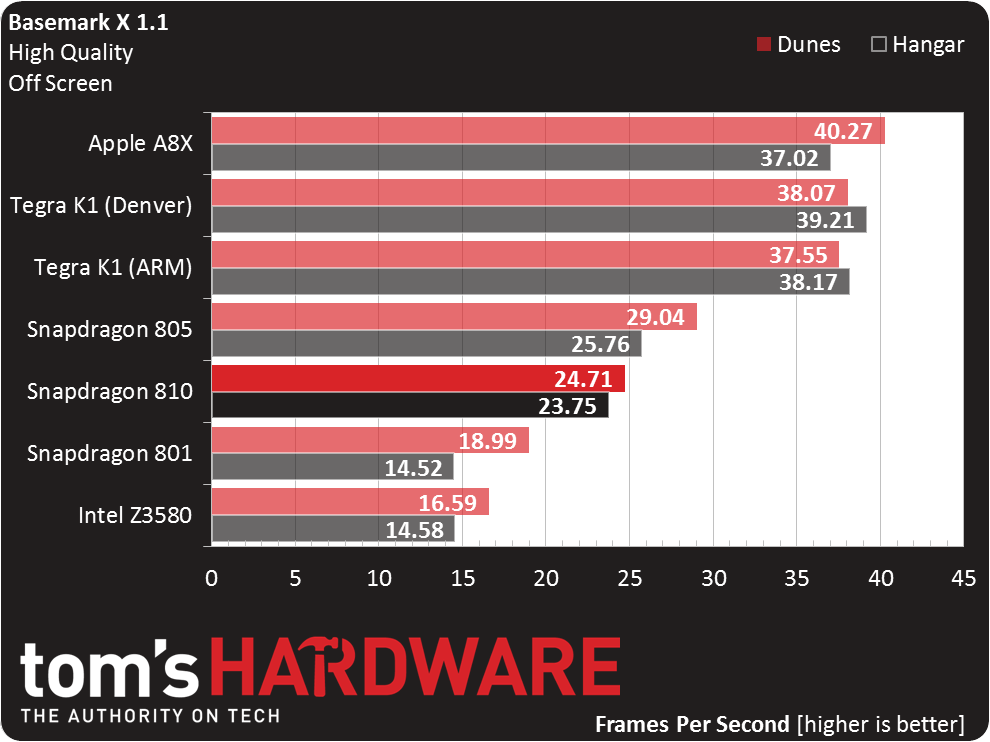
The 810 doesn't seem to like Basemark X. It trails the 805 in both Dunes and Hangar at both Medium and High quality settings by as much as 20%. Considering how much faster Adreno 430 is in 3DMark and the other graphics tests we've run, I'm inclined to believe this is a software driver issue rather than hardware. The other possibility is thermal throttling, although I didn't notice excessive skin temperatures while running any of the benchmarks.
GFXBench 3.0 Corporate
Kishonti GFXBench 3.0 is a cross-platform GPU benchmark supporting both the OpenGL ES 2.0 and OpenGL ES 3.0 APIs. It comprises both “high-level” game-like scenarios, along with more “low-level” tests designed to measure specific subsystems.
Get Tom's Hardware's best news and in-depth reviews, straight to your inbox.
Among the high-level tests are Manhattan and T-Rex. Manhattan is a modern, complex OpenGL ES 3.0-based test, while the OpenGL ES 2.0-level T-Rex is a holdover from GFXBench v2.7.
The low-level tests include Fill, which measures fill rate by rendering four layers of compressed textures; Alpha Blending, a test that renders layers of semi-transparent quads using high-resolution, uncompressed textures; ALU, for measuring shader compute performance; and Driver Overhead, which measures the CPU overhead of the graphics driver and API by making a lot of draw calls and state changes.
See GFXBench 3.0: A Fresh Look At Mobile Benchmarking for a complete test-by-test breakdown of this benchmark.
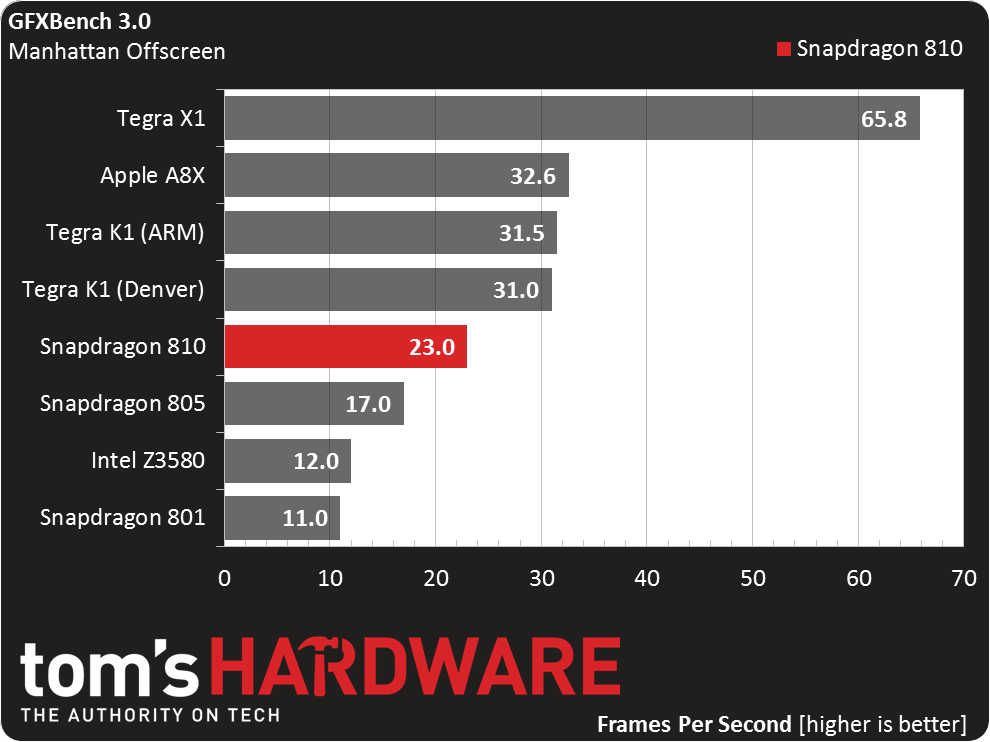
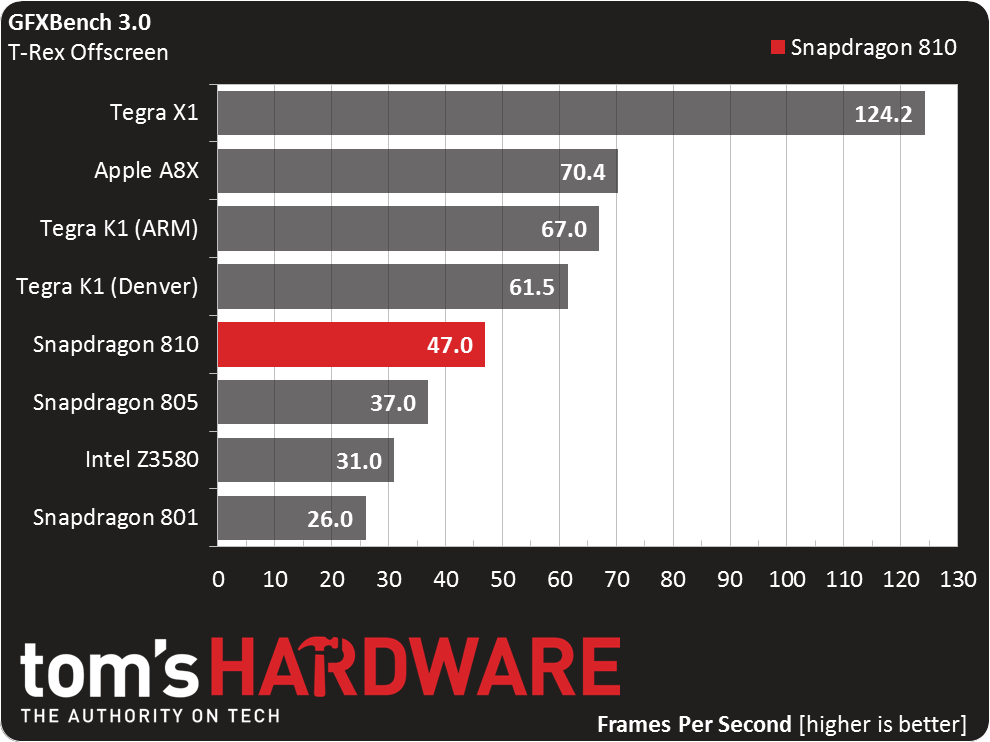
Qualcomm's 30% performance improvement estimate is proving to be pretty accurate. The Adreno 430 is 35% faster than Adreno 420 in Manhattan and 27% faster in T-Rex. It still can't touch the frame rates possible from Nvidia's year-old Kepler based GPU, though, and well, nobody's going to get anywhere close to the pixel shading prowess of the X1. Good grief! I'm very curious to find out how much power the X1 consumes.
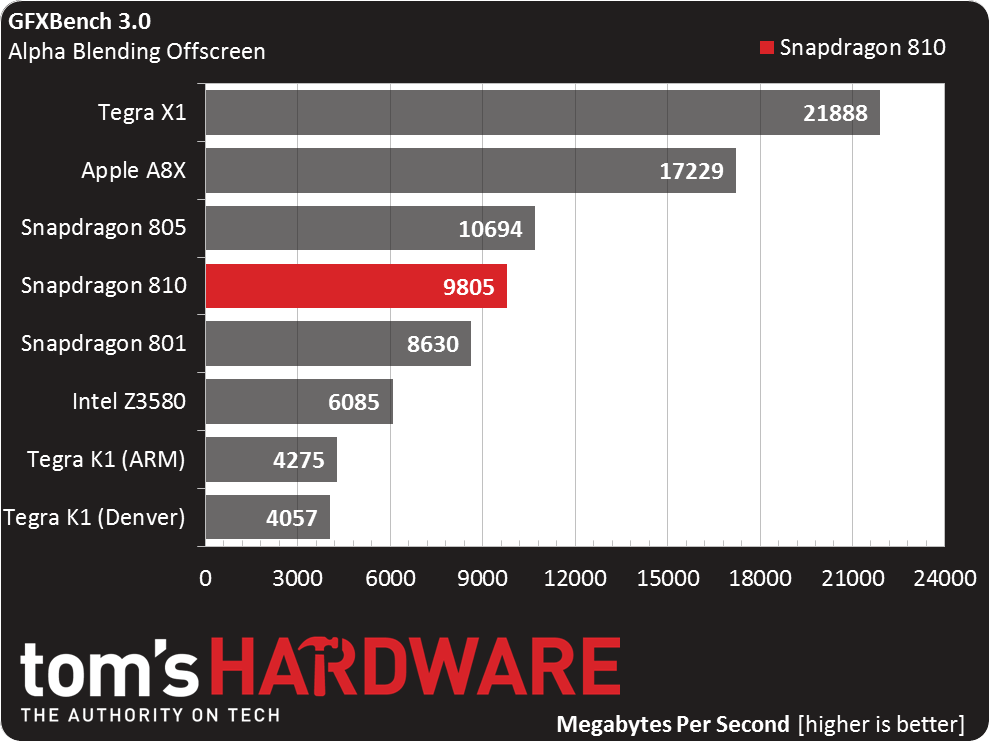
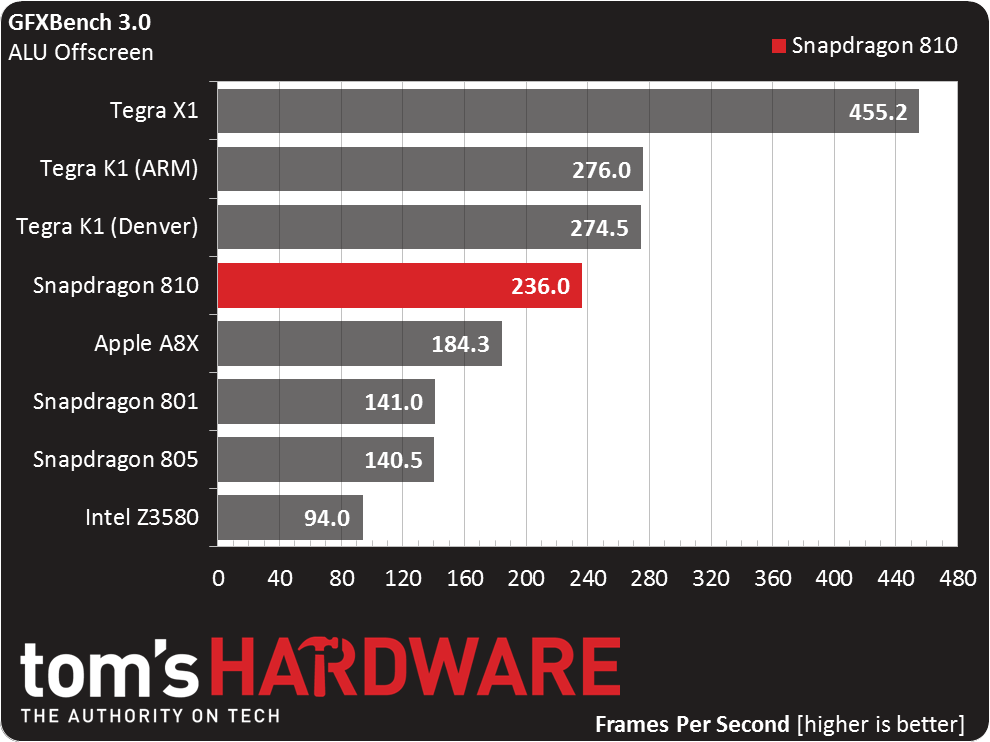
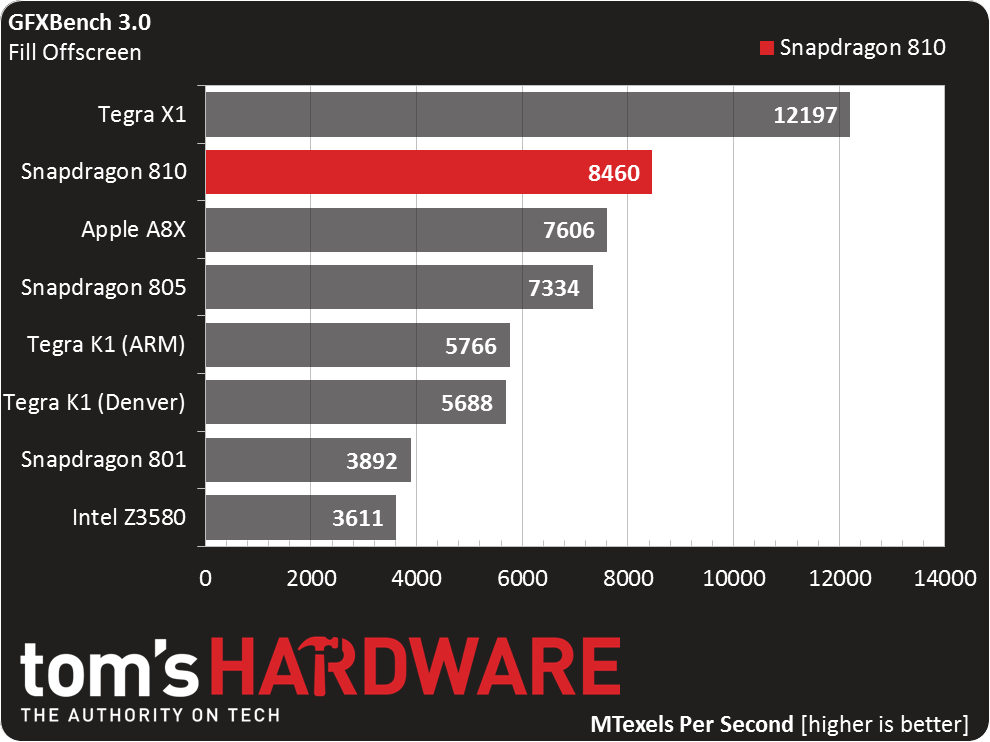
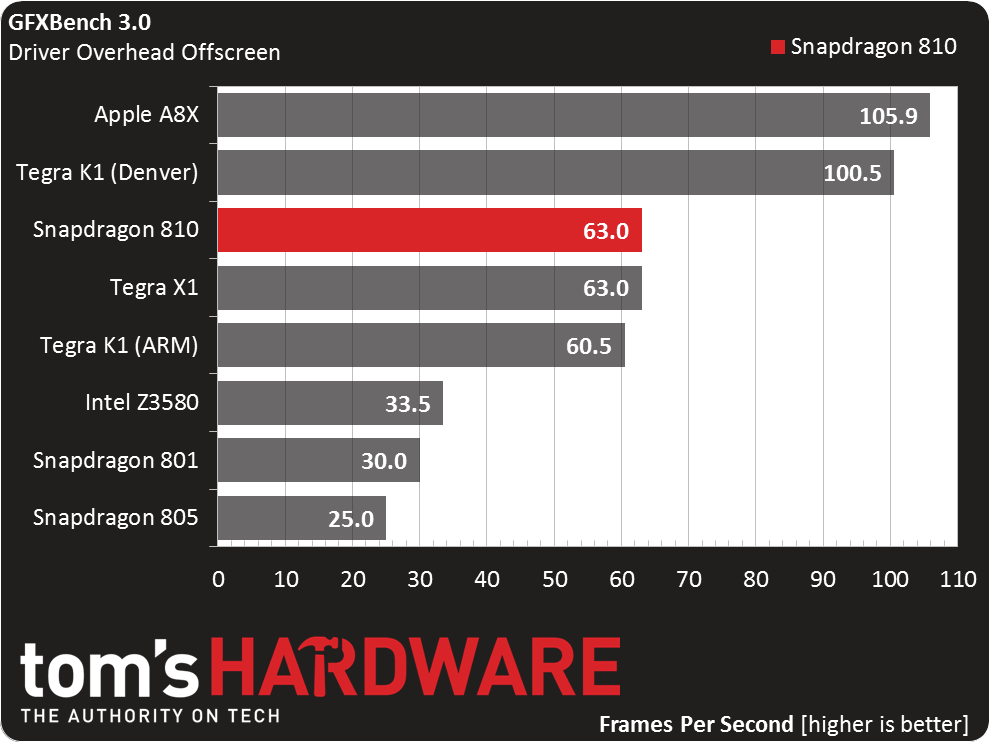
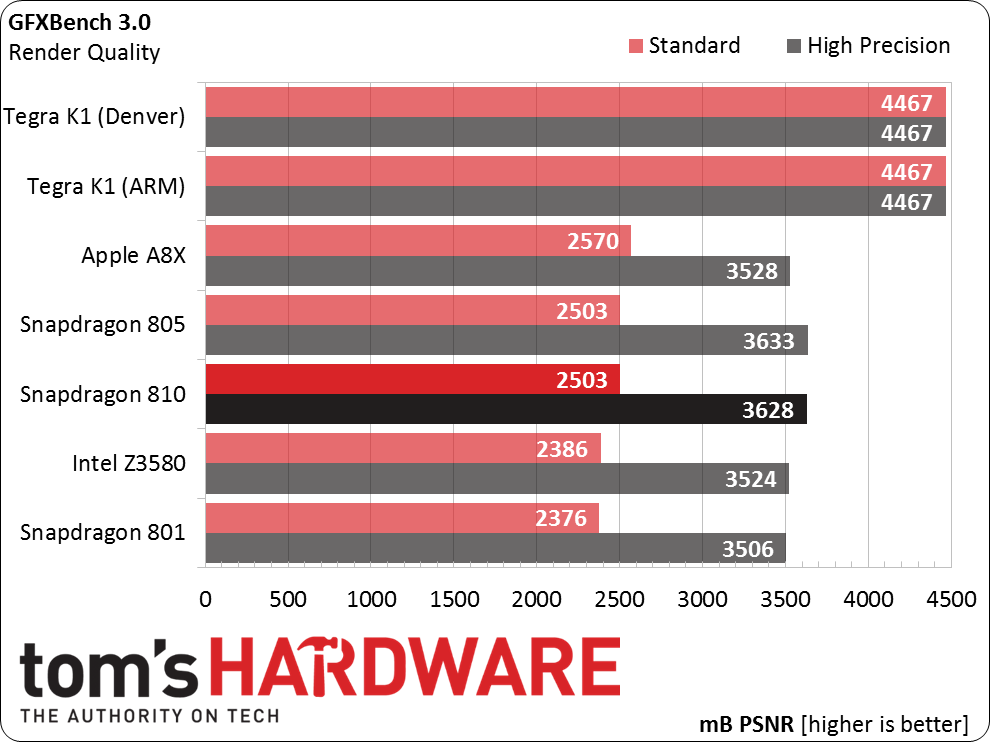
The 810 is 9% slower than the 805 in the memory bandwidth limited Alpha Blending test, which agrees nicely with our multi-core STREAM results, where the 810 trailed by a similar amount. Moving to the ALU test, it looks like the Adreno 430 does indeed have additional shading assets based on its 68% performance improvement over the Adreno 420. Fill rate also improves putting the 810 second only to Nvidia's X1. Qualcomm also makes a noticeable gain in the driver overhead test.
Other than the suspected driver issue with Basemark X, the Adreno 430 delivers on its 30% performance increase prediction. If it's capable of sustaining these performance levels over time without throttling, then the 430 looks to be a substantial improvement over the temperature limited Adreno 420.
-
realjjj In Geekbench your result is by far the highest in the database , something is off there, it's overclocked or you are testing in a fridge or you got some new revision.What's certain is that something is way off.Reply -
MobileEditor ReplyIn Geekbench your result is by far the highest in the database , something is off there, it's overclocked or you are testing in a fridge or you got some new revision.What's certain is that something is way off.
The 810 scores lower than both the Tegra K1 (Denver) and A8X in Geekbench single-core and 8% better than the A8X in multi-core. Looking at the table for the individual Integer test results shows that most of the 810's advantage is in the AES and SHA1 encryption tests, which AArch64 targets with new instructions, as I noted in the article.
I used Geekbench 3 Pro v3.3.1 (as noted on the "Testing" page) and I definitely didn't test it in a fridge :) It was standing on a conference room table like shown in the picture on the "Testing" page.
- Matt -
MrCommunistGen "With only half as many cores, both A8X and Tegra K1 (Denver) see their IPC advantage diminish in the multi-core tests"Reply
A8X is a tri-core CPU. -
airborn824 This does not seem very promising at all. At this rate i am stuck with my S4 this year. I wont upgrade with such a small performance increase.Reply -
MobileEditor Reply"With only half as many cores, both A8X and Tegra K1 (Denver) see their IPC advantage diminish in the multi-core tests"
A8X is a tri-core CPU.
Doh! I was still thinking A8. That's what happens when writing at 4am with no sleep. I'll fix that.
- Matt
-
MobileEditor Replyhow efficient is it?
If you're referring to Tegra X1, Nvidia claims between 5W-10W depending on application (tablet or car). We can't verify these claims since there aren't any shipping products yet and nobody outside of Nvidia has even been able to touch it.
For the 810, we weren't given enough time to test battery life. We need to wait until products ship. With the 810 moving to 20nm and the fact that the Krait CPUs were pushed to their max frequency, I wouldn't be surprised to see the 810 use less power than the 805 for average tablet workloads. The Adreno 430 might use a little more power than 420 though.
- Matt -
JeanLuc Are you checking to see if any of the devices are deliberately 'turboing/boosting' clockrates when certain benchmarks are run?Reply
